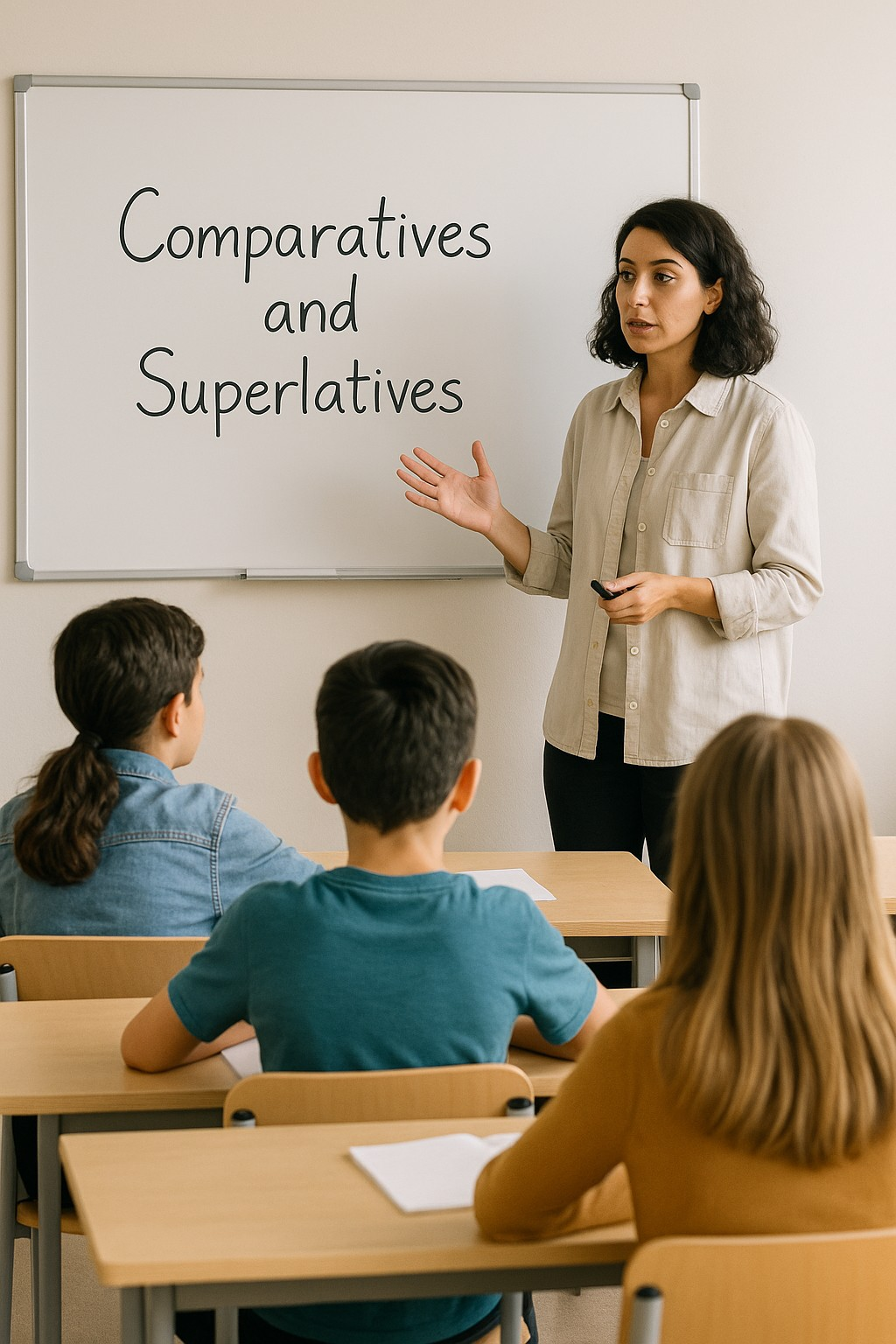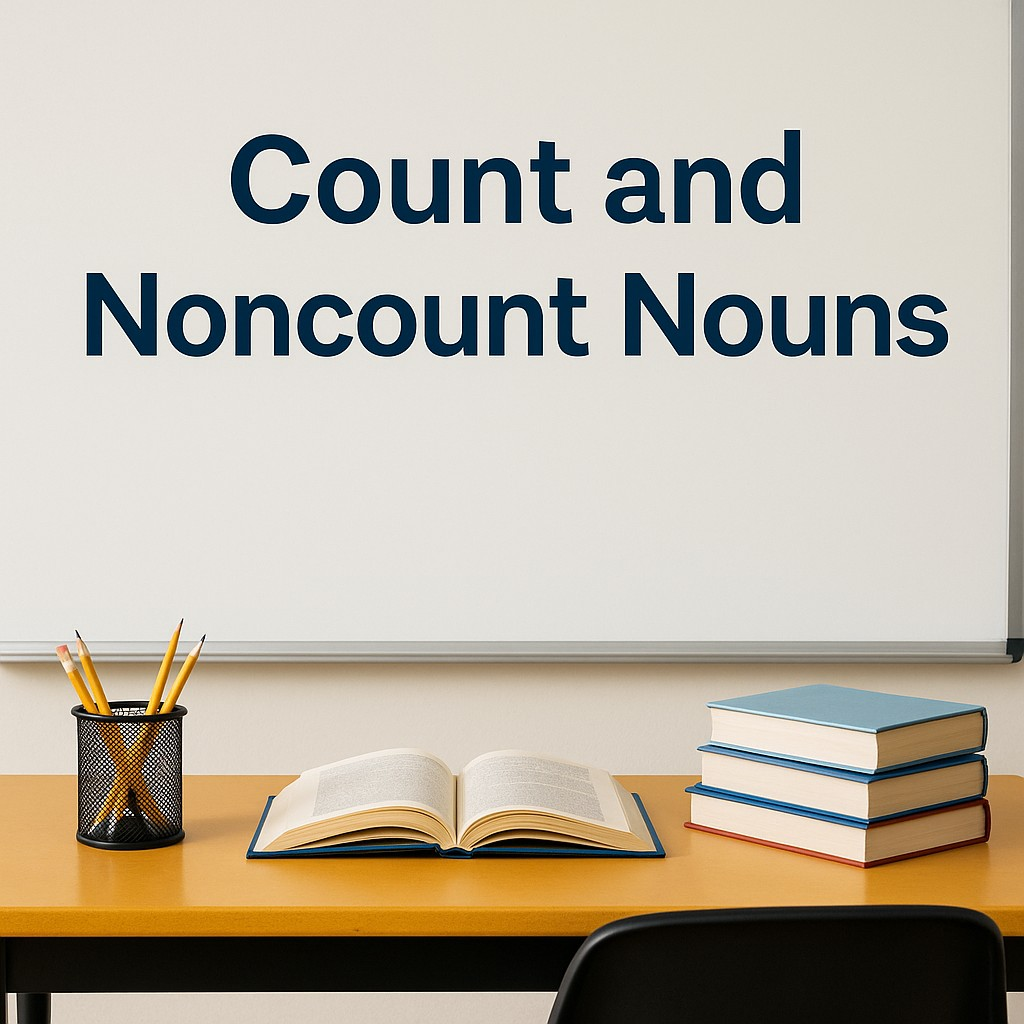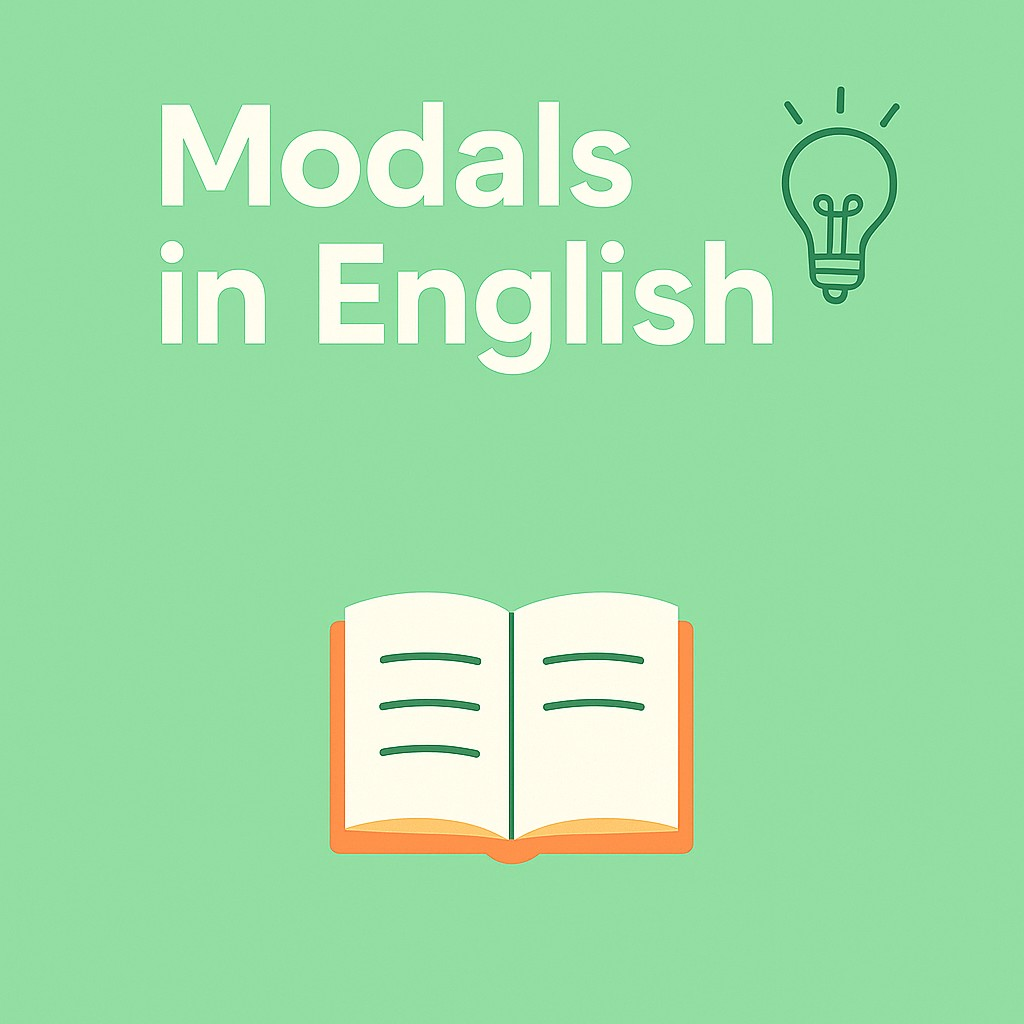Comparatives and superlatives help you describe and compare people, places, and things.
to talk about the highest or lowest degree in a group of three or more. In this lesson, you will learn:
- How to use comparatives and superlatives correctly
- Important spelling rules
- How to use one of the + superlative + plural noun
- Common mistakes to avoid
1. What Are Comparatives?
We use comparatives to compare two people, places, or things.
Form: adjective + -er or more + adjective
Examples:
- This book is shorter than that one.
- Maria is more patient than her brother.
- Today is hotter than yesterday.
2. What Are Superlatives?
We use superlatives to show that something has the highest or
lowest quality in a group of three or more.
Form: the + adjective + -est or the most + adjective
Examples:
- She is the tallest student in the class.
- This is the most interesting movie I have seen.
- August is the hottest month of the year here.
3. Spelling Rules for Comparatives and Superlatives
One-syllable Adjectives
Rule: Add -er for comparatives and -est for superlatives.
| Adjective | Comparative | Superlative |
|---|---|---|
| tall | taller | the tallest |
| fast | faster | the fastest |
| old | older | the oldest |
Double the final consonant (CVC pattern)
If the adjective ends in consonant + vowel + consonant (CVC),
double the last consonant before adding -er / -est.
| Adjective | Comparative | Superlative |
|---|---|---|
| big | bigger | the biggest |
| hot | hotter | the hottest |
| thin | thinner | the thinnest |
Two-syllable Adjectives Ending in -y
If a two-syllable adjective ends in -y, change y → i
and add -er / -est.
| Adjective | Comparative | Superlative |
|---|---|---|
| happy | happier | the happiest |
| busy | busier | the busiest |
| easy | easier | the easiest |
Longer Adjectives (Two or More Syllables)
For most two-syllable adjectives (not ending in -y) and for all adjectives with
three or more syllables, use more and the most.
| Adjective | Comparative | Superlative |
|---|---|---|
| careful | more careful | the most careful |
| expensive | more expensive | the most expensive |
| comfortable | more comfortable | the most comfortable |
Irregular Forms
Some adjectives do not follow the regular rules.
| Adjective | Comparative | Superlative |
|---|---|---|
| good | better | the best |
| bad | worse | the worst |
| far | farther / further | the farthest / the furthest |
4. Usage Rules: When to Use Comparatives and Superlatives
Comparatives: Comparing Two Things
Use comparatives when you are comparing two people, places, or things.
We often use than after the comparative.
- This exam is easier than the last one.
- My house is smaller than yours.
- English is more useful than Latin for my job.
Superlatives: Talking About a Group
Use superlatives when you are talking about groups of three or more.
- She is the youngest in her family.
- December is the coldest month here.
- This is the most difficult unit in the book.
5. Using “One of the + Superlative + Plural Noun”
We often use the structure one of the + superlative + plural noun to say that something is in a group with the highest degree of a quality. It is not necessarily the only one, but it is part of the top group.
Form: one of the + superlative adjective + plural noun
Examples:
- Paris is one of the most beautiful cities in the world.
- This is one of the best restaurants in town.
- She is one of the tallest players on the team.
- English is one of the most important languages for business.
- The noun after the superlative is plural (cities, restaurants, players, languages).
- We usually use the verb ‘is’ before “one”.
- This form is useful when you don’t want to say something is the only number one, but it is in the top group.
Using “more” and “-er” Together
❌ She is more taller than me.
✅ She is taller than me.
Using “the” with Comparatives
❌ This house is the bigger.
✅ This house is bigger.
Using a Superlative for Two Items
❌ Between these two shirts, the blue one is the nicest.
✅ Between these two shirts, the blue one is nicer.
Forgetting the Plural Noun After “One of the…”
❌ Paris is one of the most beautiful city in Europe.
✅ Paris is one of the most beautiful cities in Europe.
Let’s Practice Comparatives and Superlatives
Exercise A
Write the comparative and superlative form of each adjective
- wet
- lucky
- little
- low
- big
- lazy
- young
- silly
- simple
- easy
Exercise B
Read each sentence. Write the comparative or superlative form in each sentence.
- I am more tired on a Thursday night than on a Sunday night.
- Traffic is the worst on Friday afternoons.
- I worked more carefully than Juliet.
- That is the most interesting book I’ve ever read.
- Life is simpler in a small town than in a big city.
- Teacher Alan gives the most homework.
- Barrow, Alaska, is colder than Chicago, Illinois.
- The Missouri River is the longest river in the U.S.
- The Verranzano-Narrows Bridge is longer than the George Washington Bridge.
- Barrow, Alaska, is the coldest city in the U.S.
Scoring and Feedback
🔵 17 – 20 Correct
Excellent work! 🎉You really understand how to use comparatives and superlatives. Keep using them in your everyday conversations and writing.
🟢 14 – 16 Correct
Great job! ✅ You have a good understanding of comparatives and superlatives. Review the ones you missed.
🟡 12 – 13 Correct
Good effort! 💪You’re learning, and that’s what matters. Take a moment to review the examples and do the quiz again.
🔴 0 – 11 Correct
No worries! 🌱 Comparatives and superlatives can be tricky at first. Go back and review the examples in the lesson.
Conclusion
Even though they appear simple, comparatives and superlatives play an important role in helping you speak and write more accurately.
When you master these, you’ll sound more natural and confident — whether you’re writing an essay, giving a presentation, or chatting with friends.
Remember! Learning a language is not about perfection—it’s about progress. Keep practicing, stay curious, and trust the process. You are moving beyond English to more opportunities, connections, and self-expression!



